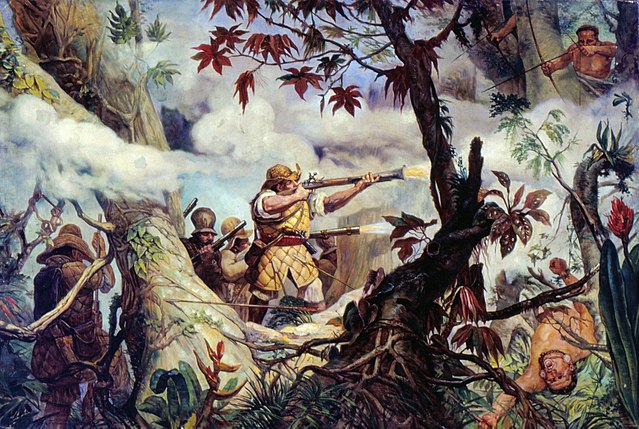Bandeirantes were settlers in Portuguese Brazil who participated in exploratory voyages during the early modern period to expand the colony's borders and subjugate indigenous Brazilians. They played a major role in expanding the colony to the modern-day borders of independent Brazil, beyond the boundaries demarcated by the 1494 Treaty of Tordesillas. Bandeirantes also enslaved thousands of indigenous people, which ultimately played a major role in the genocide of Indigenous peoples in Brazil.
Domingos Jorge Velho and Antônio F. de Abreu, by Benedito Calixto
Battle of the militia of Mogi das Cruzes and the Botocudos
Monument of Sepé Tiaraju
1979 Film O Caçador de Esmeraldas
Colonial Brazil comprises the period from 1500, with the arrival of the Portuguese, until 1815, when Brazil was elevated to a kingdom in union with Portugal. During the 300 years of Brazilian colonial history, the main economic activities of the territory were based first on brazilwood extraction, which gave the territory its name; sugar production ; and finally on gold and diamond mining. Slaves, especially those brought from Africa, provided most of the workforce of the Brazilian export economy after a brief initial period of Indigenous slavery to cut brazilwood.
The brazilwood tree, which gives Brazil its name, has dark, valuable wood and provides red dye
Historical centre of Salvador in 2007 – the architecture of the city's historic centre is typically Portuguese.
17th-century Jesuit church in São Pedro da Aldeia, near Rio de Janeiro
View of a sugar-producing farm (engenho) in colonial Pernambuco by Dutch painter Frans Post (17th century)








